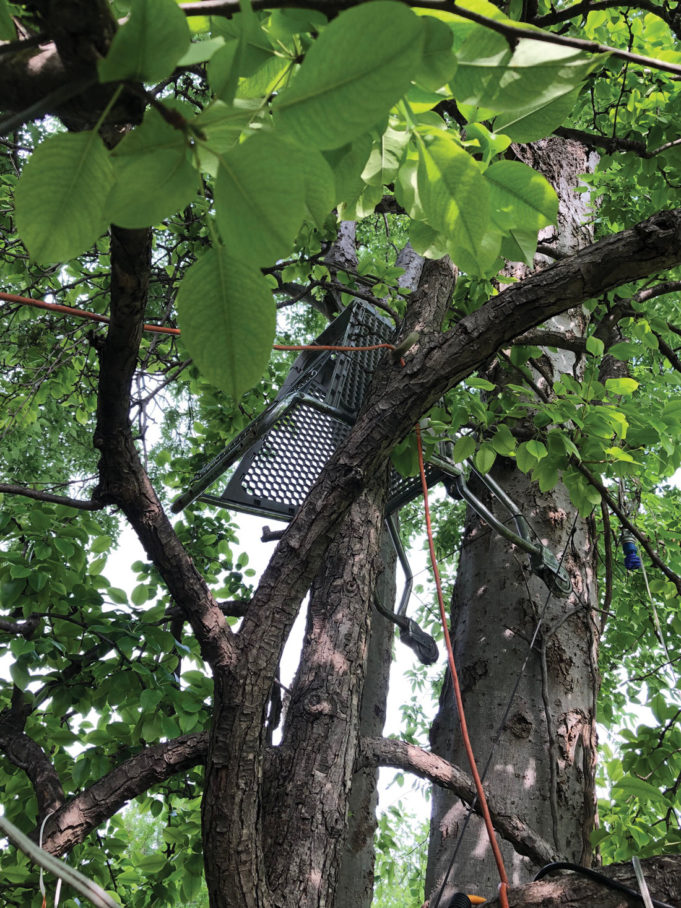I don’t have the academic equipment to articulate what makes art art, but I can mostly get behind the notion that art is whatever someone says it is, because I like its potential to confound and enrage more rules-oriented personalities. Personally, this translates to me appreciating pieces of garbage that are thoughtfully arranged, even if the arrangement is in the form of an Instagram frame, placed, for example, around a pile of nachos spilled in a parking lot. That, in my opinion, is art, because it forces you to question if something is meaningful on its own without the commentary of a person who likes to post IG pics of trash. Matt Sacks, curator of the Grackle Art Gallery in Arlington Heights, also favors an aesthetic that finds meaning in mishaps and refuse, and because of that, he is currently embroiled in a dispute with the city.
Late last month, Sacks texted me to meet him about a potential story, and the next day I went to his house on El Campo (which doubles as the gallery). Sacks directed me to his front yard and pointed up to the branches of a large, old pear about five feet away from the northwest corner of his house, where a familiar shape hung, lashed with thin black ropes to an upthrust bough.
“Why is there a shopping cart in your tree?” I asked him.
“It’s art,” he said.
Sacks said he put the cart up there five years ago, and it only recently appeared on the city’s radar. “Back in January,” he said, “the code people came to me and said, ‘We want you to clean up the front yard, clean up everything, and take the shopping cart out of the tree,’ so I cleaned the leaves out of the front gutter in the street, got the brush out of the front yard, cleaned things up. But the shopping cart stays. And the code enforcement office … he’s visited here two or three times. He’s left notices on the door, and he keeps telling me to take down the shopping cart. And I told him, ‘The shopping cart is art. It stays here.’ ”
Sacks has a court date on Tuesday, June 25, and he’s currently looking at a fine of $564 and the demand that he still will have to remove the cart. Last Tuesday, he sent me a text that said it’s becoming a free speech issue.
That sounded kind of dramatic to me, but I guess that’s ultimately what art/not art clashes boil down to. And seeing as how Sacks installed, rather than stashed, the cart in his tree, I’d argue that his intent is indeed artistic. Sacks’ home is old and is decorated with an interesting assortment of wall adornment, but it is tidy, and even the flotsam and jetsam found between the sidewalk and his front porch seem to be there on purpose. And that distinction between “installation” and “careless storage” is important. I have some neighbors in my apartment complex who have routinely left piles of crap lying around their place –– broken bikes, children’s toys, shopping bags, piles of clothes, and not one but two shopping carts. The complex has made them clean up their junk (as it usually ends up near the dumpster at the front of the parking lot), and I don’t think it would occur to them to claim their debris is art. But now that I think about it, thank God for that, because seeing their castoff odds and ends overflowing their patio fence and poking through the hedge on the other side pisses me off, so I get where the person who narc’d on Sacks to the Code Compliance Cops is coming from. To someone else’s sense of taste, Sacks’ art is just garbage hanging from a tree.
But then again, I also used to live on the corner of Winfield and Suffolk, a couple blocks west of the notorious Crazy Lady, whose house was an interesting, if foreboding, mélange of religious-mania décor and poorly maintained decrepitude. It was artistic in its own way, sort of beautiful if you aren’t put off by messages about demons or the certainty of hell. And I don’t recall her house ever changing, code compliance be damned. All I can say about Sacks’ arboreal shopping cart is that it’ll be interesting to see how artistic-minded the judge at his court hearing is. Hopefully, Sacks can make a good case for freedom of expression. Maybe it’ll even inspire my neighbors to set up a gallery of their own.












